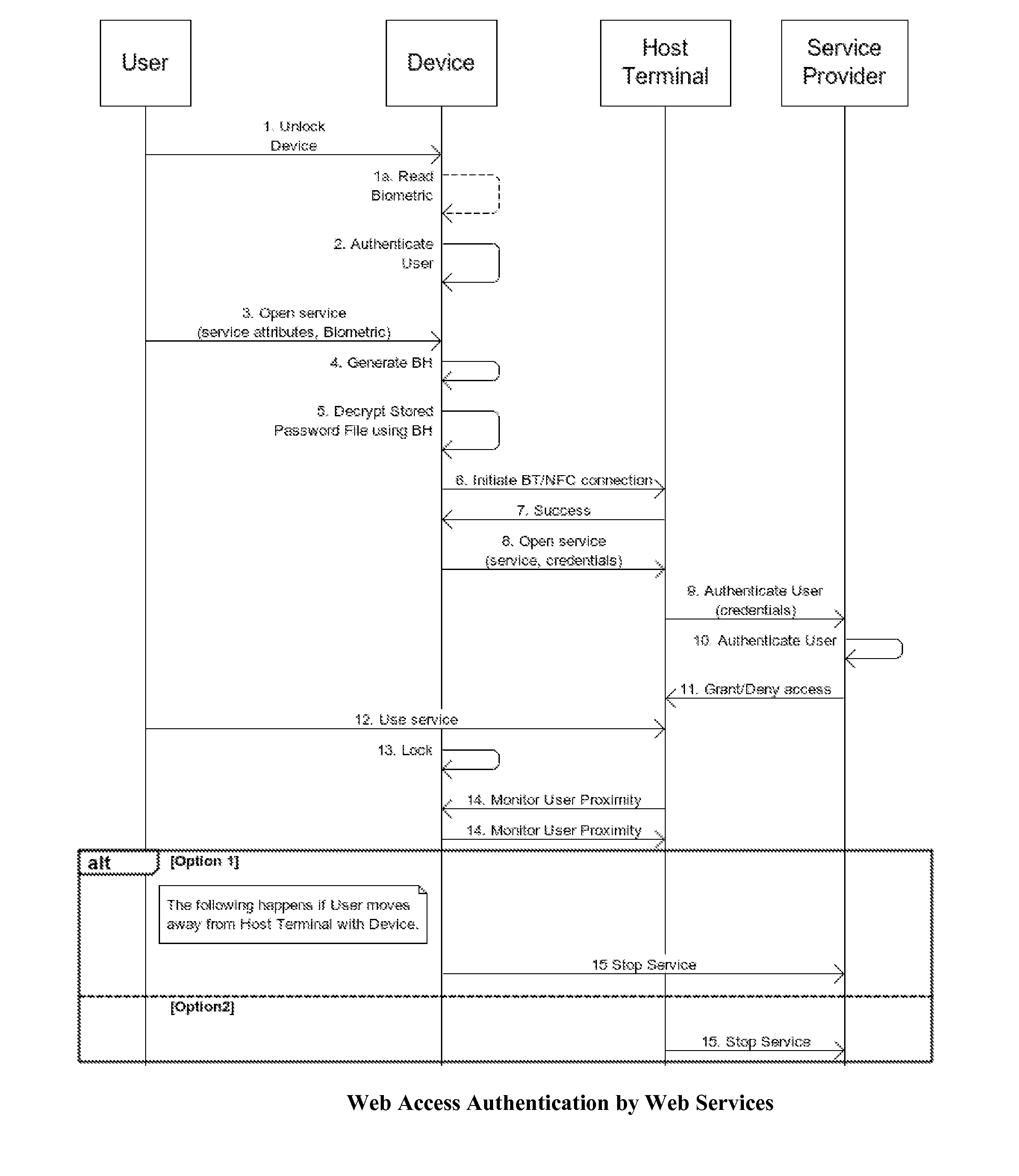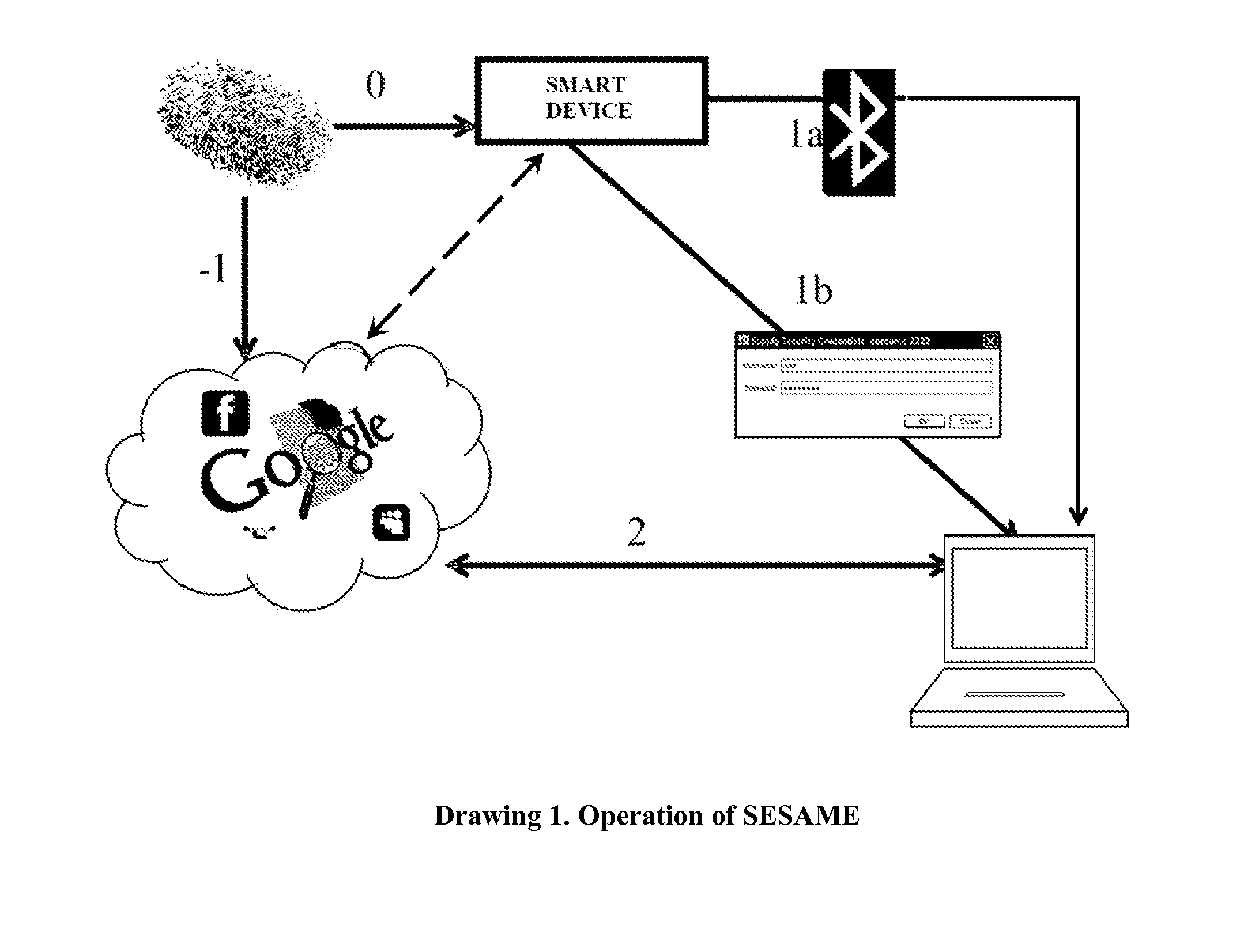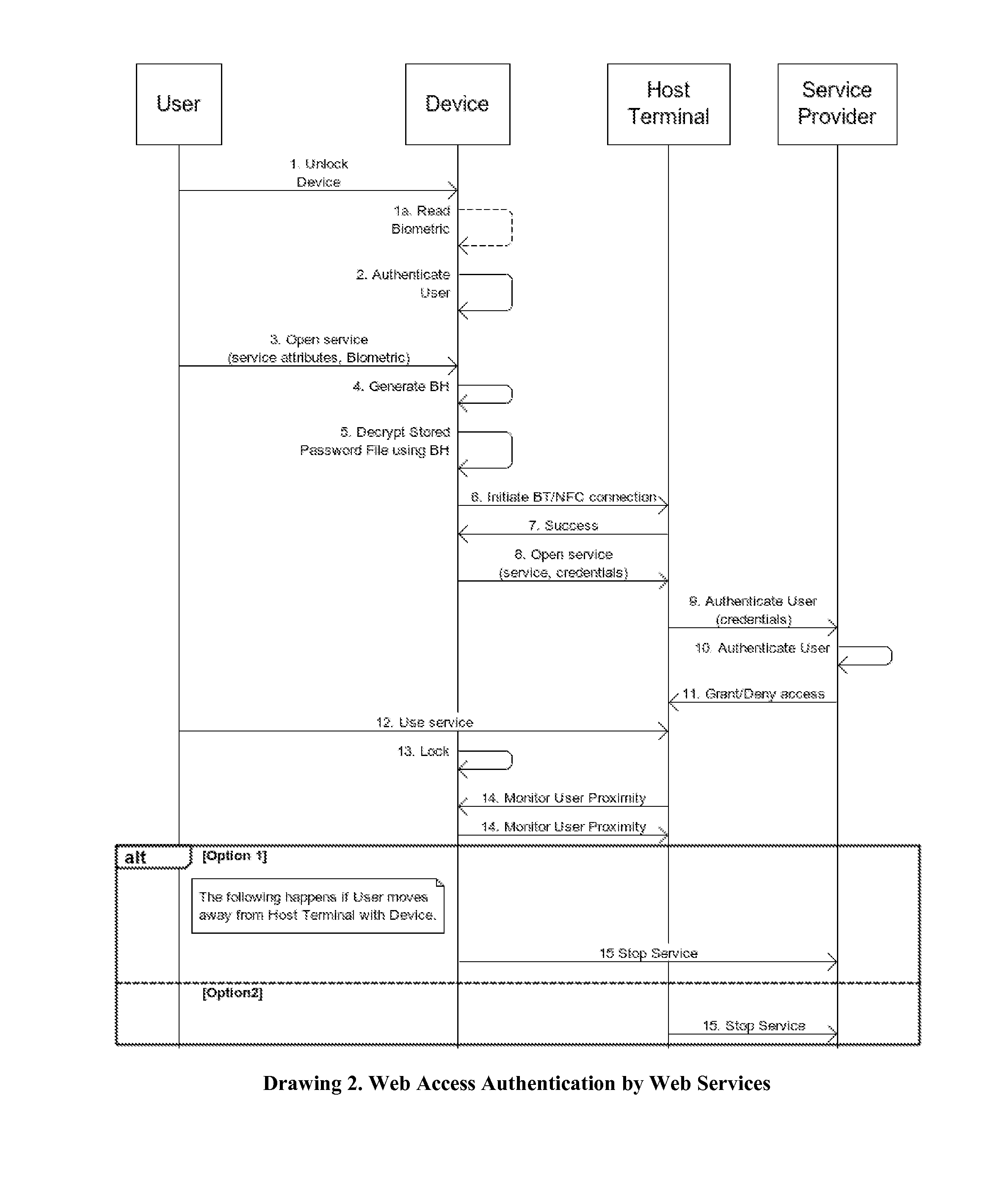Smartdevices Enabled Secure Access to Multiple Entities (SESAME)
a smart device and multiple entity technology, applied in the field of smart devices enabling secure access to multiple entities, can solve the problems of increasing the risk of unauthorized access to assets, increasing the chance of compromise, and using additional authentication factors, and achieving the effect of efficient use of limited energy and longer standby tim
- Summary
- Abstract
- Description
- Claims
- Application Information
AI Technical Summary
Benefits of technology
Problems solved by technology
Method used
Image
Examples
second embodiment
[0170]Drawing 7 depicts the CPS entity system where the user reserves a resource via the owner (a human) of the resource. The main differences in this embodiment against the previous embodiment are that the user makes the reservation using her smart device through an owner who is also using her smart device and that the authentication is performed on the spot by the resource without involving the owner or the owner's agent. This embodiment also allows the owner to gain access to the resource using the on-the-spot authentication when the owner acts as the resource. The methodology involved in this embodiment consists of the following 14 steps:
[0171]1. U presents credentials to D either using Biometrics (finger print scanner / Face unlock, etc.) or Pattern unlock to access D.
[0172]2. D reads the input and authenticates U, based on type of credentials / authentication mechanism.[0173]a. If authenticated D unlocks for U.[0174]b. Else asks U to try again. (After a few tries, phone's contents...
first embodiment
[0181]Step 9 in the CPS entity access system, refer to Drawing 7).
[0182]If O does not approve the reservation request, the process is terminated (and U is informed via D).
[0183]9. If O authorizes the reservation by U, O will use OD to send U's reservation request to R, and makes the reservation.
[0184]10. Reservation confirmation using devices.[0185]a. OD confirms to O the reservation.[0186]b. OD also confirms to U via D the reservation. Alternately, O confirms to U in person (orally, in writing, or any other means).
[0187]11. U via D requests immediate access to the reserved resource.
[0188]12. D generates BH (the same as that generated in step 5) after reading biometric input from U (UBIOMETRICs) and sends it to the resource via NFC to requests access.
[0189]13. On the Spot Authentication: R authenticates U by using the supplied BH and other reservation information (such as the reserved access time).
[0190]14. Based on the authentication result from the previous steps, the resource eit...
third embodiment
[0191]Drawing 8 depicts the CPS entity access system where the user wants to reserve or access a resource via an owner who uses a reservation system. In this particular embodiment, the main difference from the previous two embodiments are that the user makes a reservation through an owner and the owner's smart device, which in turn interfaces with the reservation system. The methodology of accessing the CPS entity in this embodiment consists of the following 15 steps:
[0192]1. U presents credentials to D either using Biometrics (finger print scanner / Face unlock, etc.) or Pattern unlock to access D.
[0193]2. D reads the input and authenticates U, based on type of credentials / authentication mechanism.[0194]a. If authenticated D unlocks for U.[0195]b. Else asks U to try again. (After a few tries, phone's contents are purged).
[0196]3. U selects the resource R and enters the desired access time (either instant or advance reservation) and her Biometric.
[0197]4. D reads U's biometric (UBIOME...
PUM
 Login to View More
Login to View More Abstract
Description
Claims
Application Information
 Login to View More
Login to View More - R&D
- Intellectual Property
- Life Sciences
- Materials
- Tech Scout
- Unparalleled Data Quality
- Higher Quality Content
- 60% Fewer Hallucinations
Browse by: Latest US Patents, China's latest patents, Technical Efficacy Thesaurus, Application Domain, Technology Topic, Popular Technical Reports.
© 2025 PatSnap. All rights reserved.Legal|Privacy policy|Modern Slavery Act Transparency Statement|Sitemap|About US| Contact US: help@patsnap.com



